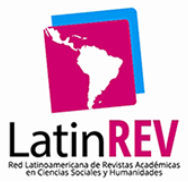Grosor cortical del Hueso Palatino en los diferentes biotipos faciales evaluados en Tomografías Cone Beam
DOI:
https://doi.org/10.24039/rcv20221021444Palabras clave:
Biotipo facial, tomografia computarizada cone beam, hueso palatinoResumen
Objetivo: El propósito de este estudio fue evaluar el grosor cortical del hueso palatino de pacientes adultos con distintos biotipos faciales por medio de la Tomografía computarizada Cone Beam (TCCB). Métodos: Se seleccionaron 150 Tomografias Cone Beam de pacientes adultos, quienes fueron clasificados en 3 grupos que incluían 50 Dolicofaciales, 50 Braquifaciales y 50 Mesofaciales. Fue medido el grosor cortical del hueso palatino de cada uno los biotipos faciales. Resultados: En las TCCB de pacientes Dolicofaciales se obtuvo un valor máximo de 12.0mm en el punto X9Y0, 10.7mm en Braquifaciales y 11.5mm en Mesofaciales se detectaron diferencias estadísticamente significativas entre los tres biotipos faciales (p< 0.05). Conclusiones: Se puede concluir que que el hueso palatino es uma región idónea para la inserción de dispositivos de anclaje temporal (DAT) y el biotipo Dolicofacial tiene un mayor grosor cortical del hueso palatino, seguido por el Mesofacial y finalmente por el Braquifacial.
Descargas
Citas
Johari, M., Kaviani, F., & Saeedi, A. (2015). Relationship Between the Thickness of Cortical Bone at Maxillary Mid-palatal Area and Facial Height Using CBCT. The Open Dentistry Journal, 9(1), 287–291.
Sadek, M. M., Sabet, N. E., & Hassan, I. T. (2016). Three-dimensional mapping of cortical bone thickness in subjects with different vertical facial dimensions. Progress in Orthodontics, 17(1).
Pan, C. Y., Liu, P. H., Tseng, Y. C., Chou, S. T., Wu, C. Y., & Chang, H. P. (2019). Effects of cortical bone thickness and trabecular bone density on primary stability of orthodontic mini-implants. Journal of Dental Sciences, 14(4), 383–388.
Hwang, S., Jeong, S., Choi, Y. J., Chung, C. J., Lee, H. S., & Kim, K. H. (2018). Three-dimensional evaluation of dentofacial transverse widths of adults with various vertical facial patterns. American Journal of Orthodontics and Dentofacial Orthopedics, 153(5), 692–700.
Möhlhenrich, S. C., Kniha, K., Peters, F., Chhatwani, S., Prescher, A., Hölzle, F., Modabber, A., & Danesh, G. (2021). Anatomical assessment by cone beam computed tomography with the use of lateral cephalograms to analyse the vertical bone height of the anterior palate for orthodontic mini-implants. Orthodontics and Craniofacial
Research, 24(1), 78–86. https://bit.ly/3Jg8Cy8
Lyu, X., Guo, J., Chen, L., Gao, Y., Liu, L., Pu, L., Lai, W., & Long, H. (2020). Assessment of available sites for palatal orthodontic mini- implants through cone-beam computed tomography. The Angle Orthodontist, 90(4),
–523.
Bourassa, C., Hosein, Y. K., Pollmann, S. I., Galil, K., Bohay, R. N., Holdsworth, D. W., & Tassi, A. (2018). In-vitro comparison of different palatal sites for orthodontic miniscrew insertion: Effect of bone quality and quantity on primary stability. American Journal of Orthodontics and Dentofacial Orthopedics, 154(6), 809–819. https://bit.ly/3JP8tU5
Bonangi, R., Kamath, G., Srivathsa, H. S., & Babshet, M. (2018). Utility of CBCT for the measurement of palatal bone thickness. Journal of Stomatology, Oral and Maxillofacial Surgery, 119(3), 196–198. https://bit.ly/3mTXVtL
Kawa, D., Kunkel, M., Heuser, L., & Jung, B. A. (2017). What is the best position for palatal implants? A CBCT study on bone volume in the growing maxilla. Clinical Oral Investigations, 21(2), 541–549. https://bit.ly/3Tgh70M
Gaffuri, F., Cossellu, G., Maspero, C., Lanteri, V., Ugolini, A., Rasperini, G., Castro, I. O., & Farronato,
M. (2021). Correlation between facial growth patterns and cortical bone thickness assessed with cone-beam
computed tomography in young adult untreated patients. Saudi Dental Journal, 33(3), 161–167. https://doi.
org/10.1016/j.sdentj.2020.01.009
Cerda-Peralta, B., Schulz-Rosales, R., López- Garrido, J., & Romo-Ormazabal, F. (2019). Parámetros
cefalométricos para determinar biotipo facial en adultos chilenos. Revista Clínica de Periodoncia, Implantología y Rehabilitación Oral, 12(1), 8–11. https://bit.ly/3TibmzI
Yadav, S., Sachs, E., Vishwanath, M., Knecht, K., Upadhyay, M., Nanda, R., & Tadinada, A. (2018).
Gender and growth variation in palatal bone thickness and density for mini-implant placement. Progress in Orthodontics, 19(1), 1–10. https://bit.ly/42h2E8P
Publicado
Cómo citar
Número
Sección
Licencia
Derechos de autor 2023 Diego Javier Galarza Valencia, César Raúl Mauricio Vìlchez, Franco Raúl Mauricio Valentín, Oscar Vicente Sotomayor Mancicidor, Román Mendoza Lupuche, Gilmer Solis Sánchez

Esta obra está bajo una licencia internacional Creative Commons Atribución 4.0.
Todos los documentos se publican bajo Licencia de Creative Commons Reconocimiento 4.0 Internacional.

Los autores conservan los derechos de autor y ceden a la revista el derecho de primera publicación, con el trabajo registrado con la Licencia de Creative Commons, que permite a terceros utilizar lo publicado siempre que mencionen la autoría del trabajo, y a la primera publicación en esta revista.



















